Should You Consolidate Retirement Accounts?
As you advance in your career and hold jobs at various companies, you may discover at some point that you’ve left behind a trail of employer-sponsored retirement accounts. You’re not alone. Many people wonder if they should leave the accounts where they are or do a rollover and consolidate them.
Presented by: Kris Maksimovich, AIF®, CRPC®, CPFA®, CRC®
If you’re like most people, you’ve saved for retirement in multiple ways, including employer plans and individual retirement accounts (IRAs). When you leave a job or as you approach retirement, it may make sense to consolidate all of your savings into one account to achieve a coordinated investment plan. This guide can help you decide whether a rollover is the best choice for you.
Leaving a 401(k) with a Previous Employer
A former employer will generally let you keep your money in its retirement plan for as long as you want, provided you meet a minimum balance. There are some benefits to keeping your money where it is:
- Less work now. Leaving the account in place saves you from having to take any action, and you can still roll them over later.
- Investment options. You might prefer the investment choices with your old plan that your new plan does not offer.
- Fees. That plan has lower fees than a new 401(k) or IRA, saving you money.
- Early withdrawal. One reason to keep funds in an employer account, at least temporarily, is that you may need to tap into your retirement savings before you reach age 59½. There is no tax penalty for taking a distribution from your former employer’s plan after you reach age 55. Although you’ll still pay income taxes, you will avoid the 10-percent penalty for early withdrawal, which would be assessed if you withdrew funds from an IRA before age 59½. Exceptions to the penalty on early IRA distributions include:
- Unreimbursed medical expenses that amount to more than 10 percent of your adjusted gross income
- Disability
- Distributions from a beneficiary IRA upon the death of the original IRA owner
- Qualified higher-education expenses
- Qualified first-time home purchase
- Distributions under a “substantially equal payment” plan, per Section 72(t) of the Internal Revenue Code
While there can be benefits and it may feel easier to leave your retirement accounts as they are, managing and keeping track of them could become burdensome. Consolidating or rolling them over into one account is one way to alleviate that burden.
6 Benefits of Consolidating Retirement Accounts
There are several benefits to consolidating retirement accounts including lower fees, less administration, reduced overlap, easier rebalancing, and making it easier on your beneficiaries. Here’s a closer look:
1. Lower fees. Your accounts generally have annual fees including administrative, management, investment, and service charges. By consolidating smaller accounts into one, you can reduce the potential for these multiple sets of fees. In addition, you may be able to avoid certain fees altogether if fee reductions are dependent on the total account balance.
2. Less administrative hassle. One major benefit of consolidating your retirement accounts into one account is that there’s less information to track. You’ll receive one statement, have only one retirement account to manage (with one password and one account number), and be able to see your overall financial picture more clearly by reducing multiple savings sources to one.
3. No overlap. If you have multiple accounts, that doesn’t necessarily mean that your investments are properly diversified. In fact, your money may be invested in similar asset classes with significant overlap. Consolidating your retirement accounts gives you a clearer view of your asset allocation picture, as well as any adjustments you may need to make.
4. Easier rebalancing. When you have multiple retirement savings accounts, you might assume your investments are sufficiently diversified, but this may not be true. These retirement savings accounts require periodic rebalancing to keep them in line with your financial objectives. Over time, as portfolios shift due to market movement, rolling all of your accounts into one allows you to properly analyze asset allocation in one place instead of many.
5. Ease for beneficiaries. Thinking about your death is pleasant, but it’s important to consider the responsibilities your loved ones and beneficiaries will have when you’re gone. With all of your retirement funds in one place, it will be less of a chore for beneficiaries to manage than tracking down multiple accounts when you die.
6. Keeping track of RMDs. Starting at age 73, you must withdraw minimum amounts, called required minimum distributions (RMDs), from your retirement accounts each year. With multiple retirement accounts, it’s more difficult to calculate accurate RMD amounts and there are steep tax penalties for underestimating RMDs and missing the deadline. Combining accounts can help reduce these risks.
What’s the Difference Between a Rollover or Transfer?
Moving a retirement account to a new employer plan or to an IRA can be done via rollover or transfer. Although these terms are often used interchangeably with transfer, there are significant differences between the two:
Merging a rollover. The retirement funds are paid to you directly, and you have 60 days to move them to another plan or IRA. If you are moving money from an employer plan, a 20-percent tax withholding will be deducted from the check. To avoid facing potential penalties, you must contribute enough to your new retirement account to replace the 20-percent withholding. Alternatively, you can ask your retirement plan administrator to make out a check payable to your new IRA custodian and mail it directly to you. It is then your responsibility to deposit the funds in your new account within 60 days. Learn more about indirect rollovers.
Merging a trustee-to-trustee transfer. The funds are sent directly from one plan to another. That is why this type of transfer is often referred to as a direct rollover. Unlike regular rollovers, there is no withholding requirement for direct transfers. When requesting a transfer from your employer’s plan or another retirement account, be sure to use the right terms to avoid unwanted tax consequences.
Whether you roll over to a 401(k) or an IRA, these are trustee-to-trustee transfers where the money moves directly from one provider to the next. If you receive a check in your name, you may have inadvertently requested a withdrawal, which would result in owing income tax on the amount and additional penalties if you have not yet reached retirement age. If this occurs, contact the recordkeeper immediately to discuss a correction.
Your Rollover Options
Roll into your new employer’s 401(k) plan. If you have a new job and establish a retirement plan with your new employer, one option is to roll your previous account balance into your new plan. Requesting a direct rollover of funds from previous employer to new employer is a nontaxable transaction that retains creditor protection.
Roll into an IRA. Whether you’re switching jobs or retiring, rolling your retirement savings into an IRA might give you more flexibility in how you manage the money you’ve saved. In this type of account, your investments continue to grow tax-deferred, meaning you’ll pay taxes upon withdrawal. Please note: You can’t borrow from an IRA as you can with a 401(k), and RMDs are still required at age 73.
- Investment choices. An employer’s 401(k) plan may be lower cost, but your choice of investments will be limited, as 401(k) plan sponsors tend to simplify the investment decision for employees by reducing the number of options. With an IRA, you have a potentially unlimited choice of investments, including individual stocks, mutual funds, and alternative investments rarely offered by employer plans.
- Control over distributions. Another benefit of IRAs is that you have more control over when your retirement savings are paid to you. Distribution requirements vary among IRA providers, so be sure to understand the choices available to you and your beneficiaries.
Roth IRA. Withdrawing traditional, pretax assets from a 401(k) into a Roth IRA is known as a Roth conversion. By doing so, you will owe income taxes on the amount converted in the year of the transaction. One benefit of this strategy is that any additional earnings in the Roth IRA can grow and be withdrawn at retirement age tax-free (as long as the withdrawal occurs at least five years after the Roth account was created).
- When considering a Roth, note that your 401(k) could have Roth or after-tax dollars already within it, and these assets will transfer to a Roth IRA without additional taxes. Contact the recordkeeper to determine if the dollars in your 401(k) are on a pretax or post-tax basis—or a mix of both.
Take a cash distribution. Although this option might seem appealing if you have debts or major expenses, there are many reasons not to withdraw your funds. One major drawback is potentially not having enough money to retire or maintain your lifestyle in retirement. In addition, you could pay significant penalties and taxes for early withdrawal.
Rollover Tips when you Consolidate Retirement Accounts
Know your IRA contribution limits. Both traditional and Roth IRAs offer great benefits, but knowing which of these retirement savings vehicles to use (and when) can be confusing. If you change your mind or make a mistake with your IRA contribution, a recharacterization may be the solution.
Creditor protection. If creditor protection is a concern, both employer plans and IRAs safeguard your retirement savings from creditors to a certain extent. Employer plans generally offer better protection than IRAs do, however. The level of protection an IRA offers depends on your state laws.
Employer stock. Finally, before moving funds to an IRA, talk to your advisor about the best way to handle employer stock held in your 401(k) or other employer retirement plan. There may be significant tax advantages to moving stock “in kind” to a taxable brokerage account rather than to an IRA. This is often referred to as the net unrealized appreciation strategy. You will pay ordinary income tax on what you paid for the stock, but any appreciation will be taxed at long-term capital gains rates.
IRA one rollover per year rule. Be aware that this rule was put in place to prevent people from using IRAs as a way to avoid paying taxes on investment gains. The IRA one-rollover-per-year rule is a tax law that limits the number of times you can roll over money from one IRA to another in a given year.
If you have any questions about consolidating your retirement accounts, don’t hesitate to reach out to us. We can help you develop the best strategy for you, keeping you on track to meet your retirement goals.
This material has been provided for general informational purposes only and does not constitute either tax or legal advice. Although we go to great lengths to make sure our information is accurate and useful, we recommend you consult a tax preparer, professional tax advisor, or lawyer.
Kris Maksimovich is a financial advisor located at Global Wealth Advisors 4400 State Hwy 121, Ste. 200, Lewisville, TX 75056. He offers securities and advisory services as an Investment Adviser Representative of Commonwealth Financial Network®, Member FINRA/SIPC, a Registered Investment Adviser. Financial planning services offered through Global Wealth Advisors are separate and unrelated to Commonwealth. He can be reached at (972) 930-1238 or at info@gwadvisors.net.
© 2025 Commonwealth Financial Network®
Latest News
How much does college really cost?
April 2, 2025
How Much Does Your Bracket Pick Really Cost? We hope you're just as excited as we were for this year’s March Madness Tournament and finally getting down to F...
READ MORE...Big News for Retirees: Social Security Fairness Act Repeals WEP and GPO
March 27, 2025
If you or your spouse have worked in both the public and private sectors—or if you’re currently drawing a government pension—there’s important news that...
READ MORE...Managing Taxes on Your Investments
February 19, 2025
Presented by Scott Portlock CFP®, CLU® When it comes to your money, it’s not what you earn, it’s what you keep. Here are some ideas that may help le...
READ MORE...Loading...






